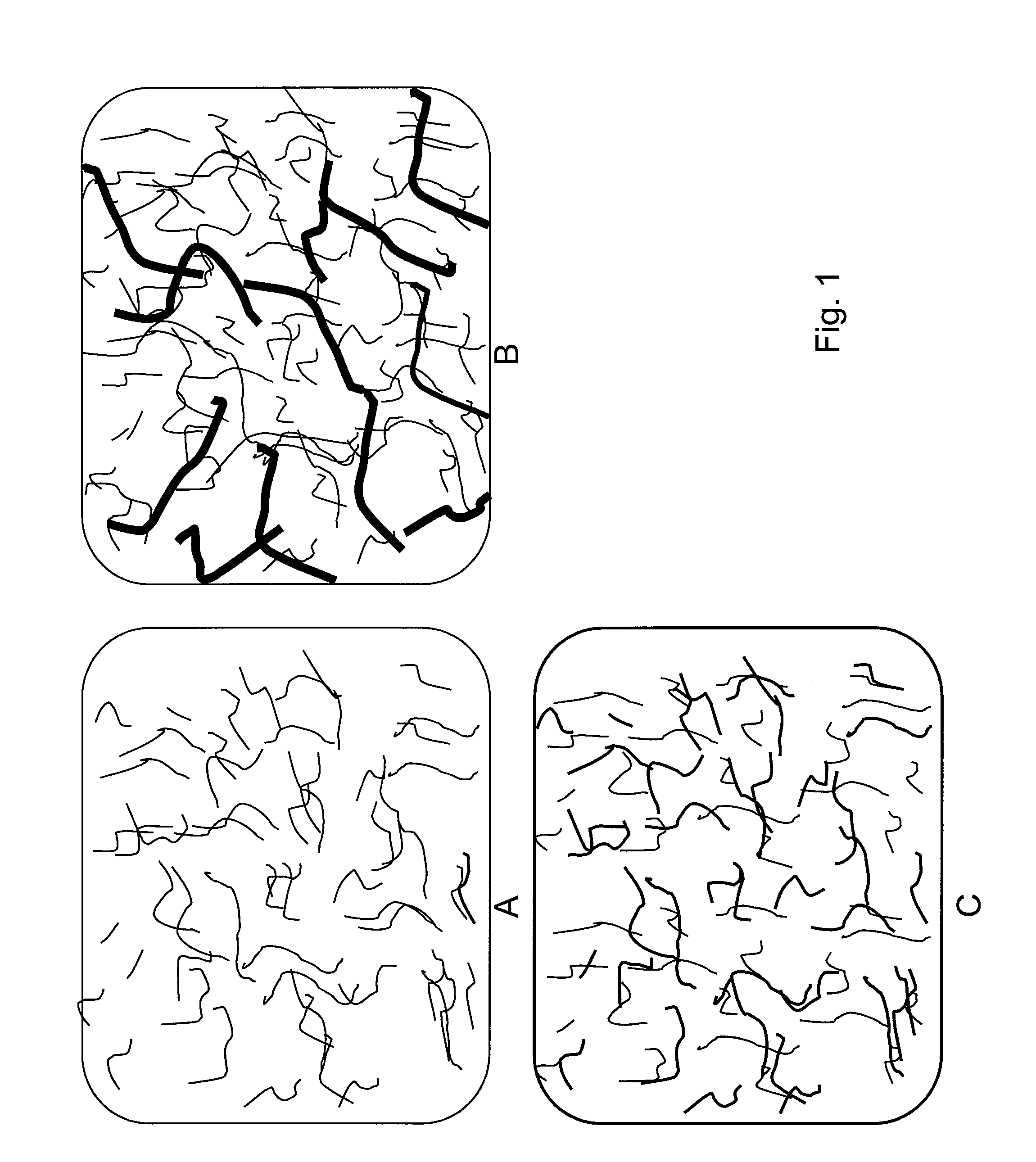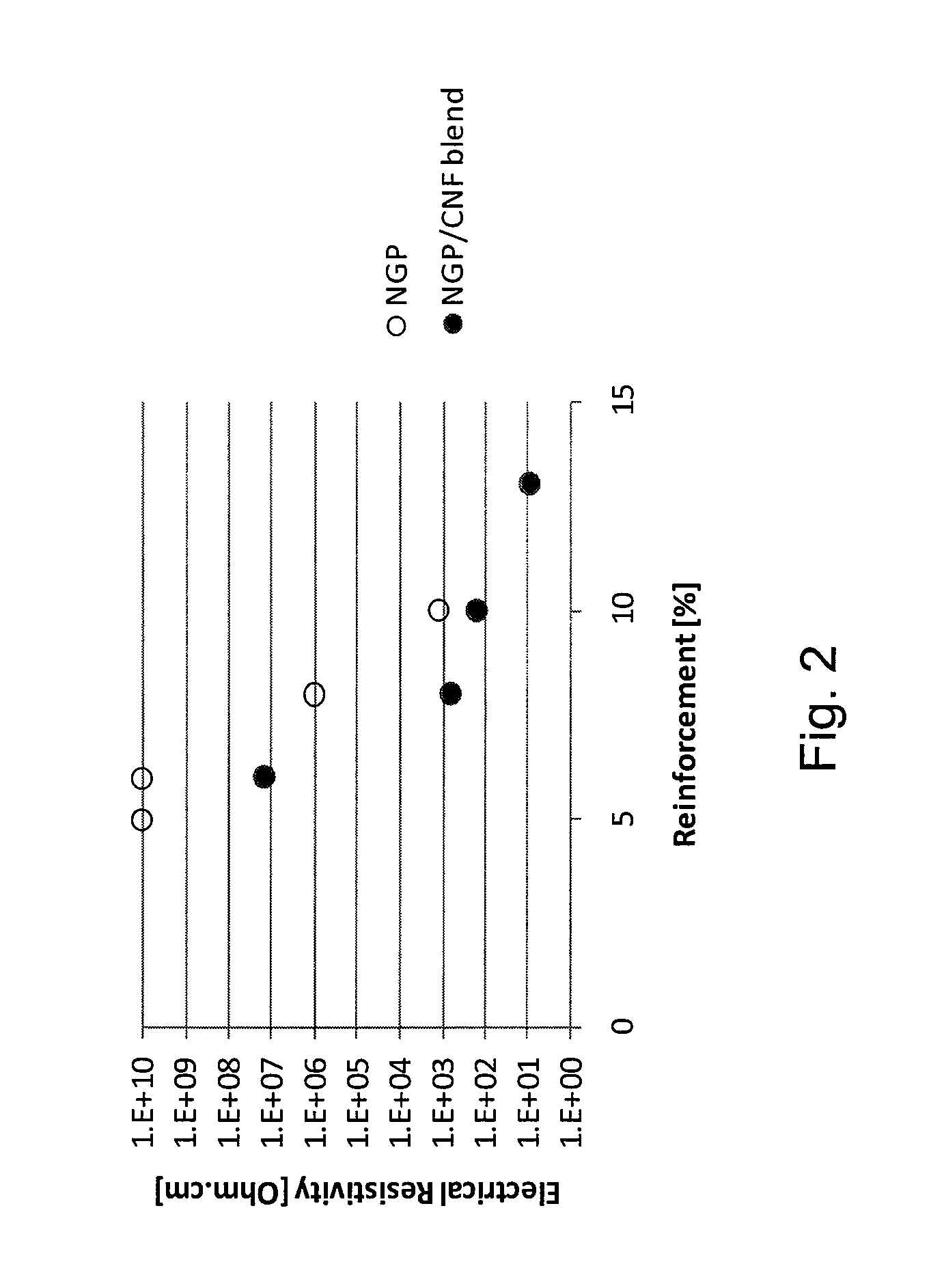Nanocarbon-reinforced polymer composite and method of making
a technology of reinforced polymer and composite material, which is applied in the direction of carbon-silicon compound conductors, non-metal conductors, conductors, etc., can solve the problems of undesirable effect, significant difficulty in incorporating vapor grown carbon fibers into a polymer matrix, and destroying the interconnections between fibers that are necessary, etc., to achieve complementary geometric and desired physical properties, low electrical resistance, and high surface area
- Summary
- Abstract
- Description
- Claims
- Application Information
AI Technical Summary
Benefits of technology
Problems solved by technology
Method used
Image
Examples
Embodiment Construction
[0014]We have found that the combination of carbon nanofibers with other nano-scale particles provides an economical hybrid system having many synergistic properties. For example, carbon nanofibers have a large aspect ratio while nano-graphene platelets, for example, disperse easily and are low in cost. In addition, we have found that the combination of carbon nanofibers and nano-scale particles unexpectedly provides a lower overall electrical resistivity, and a lower percolation threshold for the onset of electrical conductivity than the use of either of these materials alone at equal loadings.
[0015]The resulting polymer composite preferably has an electrical resistivity of less than about 107 ohm-cm in the direction of the melt flow, or less than about 106 ohm-cm, or less than about 105 ohm-cm, or less than about 104 ohm-cm, or less than about 103 ohm-cm. The resistivity needed will depend on the application the material is being used in. For example, the resistivity should be in ...
PUM
| Property | Measurement | Unit |
|---|---|---|
| diameter | aaaaa | aaaaa |
| length | aaaaa | aaaaa |
| length | aaaaa | aaaaa |
Abstract
Description
Claims
Application Information
 Login to View More
Login to View More - R&D
- Intellectual Property
- Life Sciences
- Materials
- Tech Scout
- Unparalleled Data Quality
- Higher Quality Content
- 60% Fewer Hallucinations
Browse by: Latest US Patents, China's latest patents, Technical Efficacy Thesaurus, Application Domain, Technology Topic, Popular Technical Reports.
© 2025 PatSnap. All rights reserved.Legal|Privacy policy|Modern Slavery Act Transparency Statement|Sitemap|About US| Contact US: help@patsnap.com


